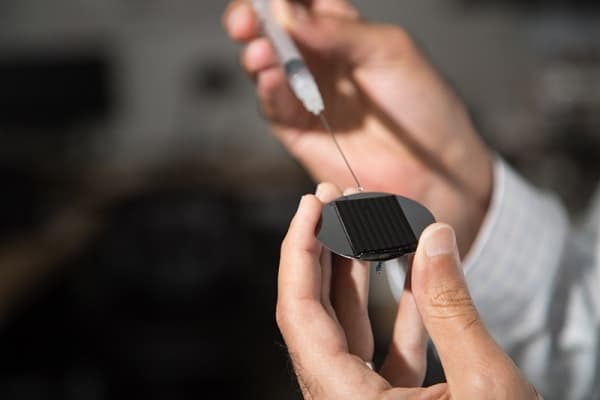Researchers develop a novel magnetic ice phobic material which outperforms others
Researchers at at the University of Houston (UH) have developed a new Ice phobic material called- magnetic slippery surface (MAGSS) to deal with the menace of ‘Icing’ often responsible for bringing down aircrafts, snapping power lines, and causing a surprising amount of structural damage.

The problem with icing occurs when droplets of freezing supercooled water strike a surface. These droplets adhere and wet the surface, attracting more and more droplets leading to an accretion. To de-ice a surface, the ice needs either to be melted, broken off, dissolved , or the surface could be altered so that the ice can't stick to it in the first place.
The researchers making use of the last technique mentioned, coated a magnetic material on one side of the surface while on the other side a thin layer of magnetic fluid called ferrofluid (a mixture of fluid and iron oxide nanoparticles) was deposited. When a droplet of water hit the surface of ferrofluid, the magnetic fluid acted as a barrier disallowing the droplet to interact with the solid. As there’s no adhesion of the ice to the solid surface, it basically slided off the surface, quoted the researchers. With just tilting of the surface the ice could be removed.

Lead Researcher Assistant Professor Hadi Ghasemi (far left) & his group
The USP of the material lies in several factors- while with the current systems water will freeze at minus 13 degrees Fahrenheit , with a surface coated with MAGSS , water would not freeze until it has reached minus 29 degrees Fahrenheit. Moreover ferrofluids can regenerate themselves and are thereby inexpensive. The material could prove immensely useful in the aircraft and power industry with widespread consumer applications as well.
The work was published in the journal#-Link-Snipped-#.
Source: <a href="https://www.egr.uh.edu/news/201611/uh-cullen-college-engineer-creates-better-state-art-materials-repel-ice" target="_blank" rel="nofollow noopener noreferrer">UH Cullen College Engineer Creates Better Than State-of-the-Art Materials to Repel Ice | UH Cullen College of Engineering</a>

The problem with icing occurs when droplets of freezing supercooled water strike a surface. These droplets adhere and wet the surface, attracting more and more droplets leading to an accretion. To de-ice a surface, the ice needs either to be melted, broken off, dissolved , or the surface could be altered so that the ice can't stick to it in the first place.
The researchers making use of the last technique mentioned, coated a magnetic material on one side of the surface while on the other side a thin layer of magnetic fluid called ferrofluid (a mixture of fluid and iron oxide nanoparticles) was deposited. When a droplet of water hit the surface of ferrofluid, the magnetic fluid acted as a barrier disallowing the droplet to interact with the solid. As there’s no adhesion of the ice to the solid surface, it basically slided off the surface, quoted the researchers. With just tilting of the surface the ice could be removed.

Lead Researcher Assistant Professor Hadi Ghasemi (far left) & his group
The work was published in the journal#-Link-Snipped-#.
Source: <a href="https://www.egr.uh.edu/news/201611/uh-cullen-college-engineer-creates-better-state-art-materials-repel-ice" target="_blank" rel="nofollow noopener noreferrer">UH Cullen College Engineer Creates Better Than State-of-the-Art Materials to Repel Ice | UH Cullen College of Engineering</a>
0
